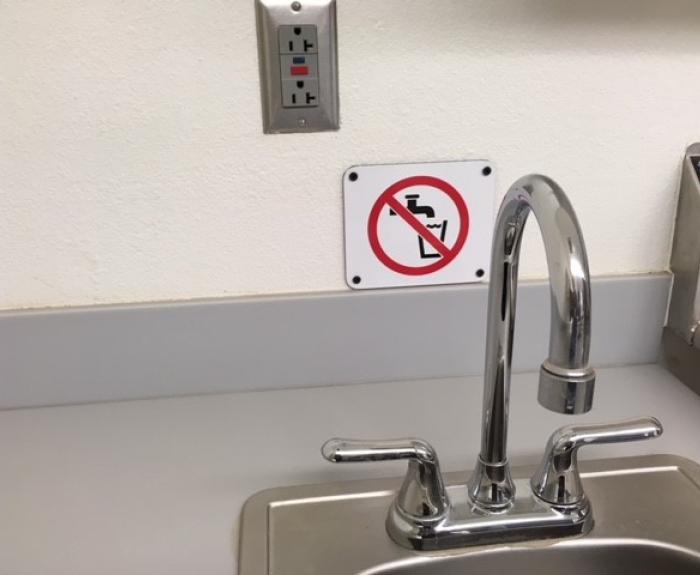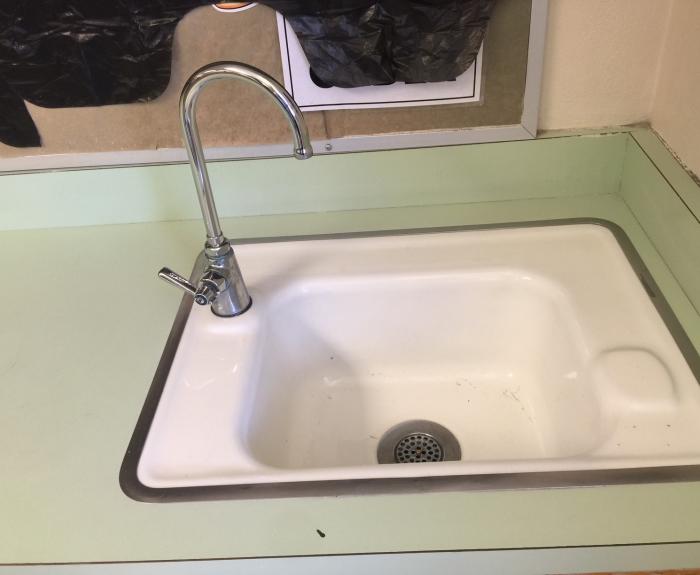FAQ
Purpose
This proactive Lead in Drinking Water Program is a multi-agency effort to test and correct lead exceedances found in cold potable drinking water sources in public school facilities. The Department of Environmental Quality (ADEQ) screened public schools in Arizona for the presence of lead in drinking water. Confirmation testing was conducted with samples above threshold, 15 parts per billion (ppb), as defined by ADEQ. Corrective actions to drinking fixtures was then coordinated with the school districts and the School Facilities Board. The School Facilities Board is partner and advocate for school districts. The intent is to provide safe lead-free drinking water for school staff and students.
SFB Lead in Drinking Water Program FAQ
The program focuses only on drinking water sources. This includes drinking fountains, bubblers, and potentially a gooseneck fixtures. Pictures will be attached to clarify what is and is not a drinking water source. Warm or hot water should not be used for drinking due to health concerns.
No, sampling is only required from sources of drinking water and water used for food preparation.
Yes
Fixtures with hot and cold water sources commonly found in science labs, restrooms, and locker rooms.
The district can install a new drinking water fountain(s) with lead reducing filters near non- drinking water locations. The district can also post drinking water warning signs in these non -drinking water locations.
Staff, students and visitors need to change their drinking water habits to use appropriate water fixtures for drinking and will not use hot and cold water fixtures intended for washing hands, cleaning lab equipment and cleaning tools.
If test results are greater than 15ppb, a temporary sign shall be placed above the fixture indicating it is not a drinking water source until PCA (Post Corrective Action or 3rd round) testing is performed with test results less than 15ppb. Once PCA test results are less than 15ppb, the fixture can be placed into service. If the school decides not to use the fixture as a source of drinking water, a permanent sign shall be placed adjacently or the fixture shall be abandoned.
Yes, install and flush 3-6 months after installation or according to manufacturer recommendations. Do not flush 6-8 hours before sampling. Do not use normal drinking water filters. Use certified lead-removing filters.
Flushing is recommended after long weeks, as well as summer and holiday breaks.
School districts may contact the SFB and apply for a Building Renewal Grant on the SFB website (www.azsfb.gov). School districts may request that the SFB expedite funding award by using an Executive Authority (EA). Please contact the SFB with any questions.
School districts may utilize the Arizona State Procurement Office’s Job-Order-Contract for plumbers. The AZ State-JOC procurement method includes 3rd party review by The Gordian Group.
The SFB recommends starting with adequate documentation and planning. Planning is important for standardization of building numbers, room numbers, terminology for fixtures and test results. The SFB can provide a populated template to the school district to manage their lead in drinking water program into the future. Using spreadsheets is a good tool for tracking progress but cannot provide the details and standardization that a database can provide.
Yes, it is very important that the district’s sampler use proper terminology to prevent confusion. For example, a bubbler fixture typically found at an elementary school sink, is not a drinking fountain. A drinking fountain hangs from a wall and can provide refrigerated water.
Yes, the flush sample reduced the lead by 13ppb which indicates that the fixture requires removal and replacement.
The Facility Technician may have used brass fittings at the filter inlet and outlet ports. The Technician may have used a brass 2-1 adaptor. These new brass parts are often made in China and contain lead.
Further Recommendations
Be sure to maintain communication with your staff, students and parents and utilize ADEQs templates that were previously distributed to your district.
- It is not necessary to shut down the water supply for an entire school and buy pallets of water. We do not recommend this. Instead, the SFB recommends posting signage at concerned sources of drinking water and installing new drinking fountains per ADA guidelines. School districts may also opt to maintain existing drinking fountains with internal filters. Conduct initial and confirmation testing to ensure lead levels are below 15ppb as part of a preventative maintenance schedule.
- The SFB can provide a populated template to the school district to manage their lead in drinking water program into the future. Using spreadsheets is a good tool for tracking progress but cannot provide the details and standardization that a database can provide.

Sink with mixing valves
(not typically a drinking water source)

Drinking Fountain
Sink with gooseneck fixture
*This could be a drinking water source if it has cold water
Sink with mixing valve and bubbler
The bubbler fixture (front & right) is a drinking water source. The mixing valves (center & back) are not a drinking water source. The sign above this sink warns individuals not to drink water at this location. To avoid confusion, the bubbler should be removed and a new drinking water fountain with a lead reducing filter should be installed near this location.